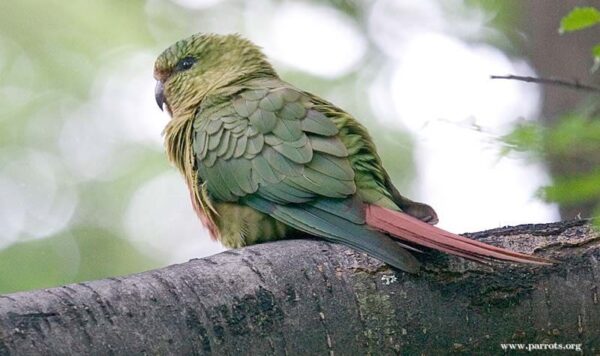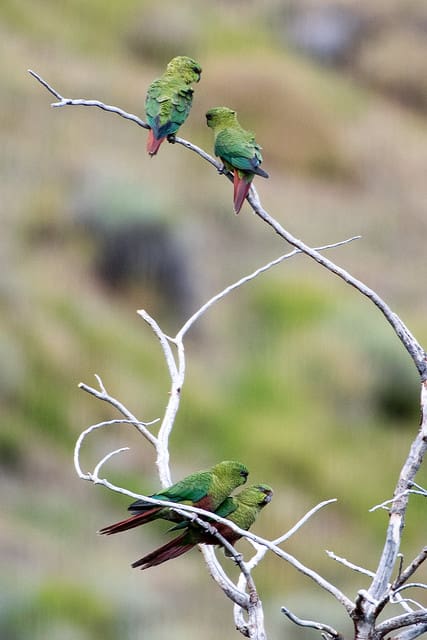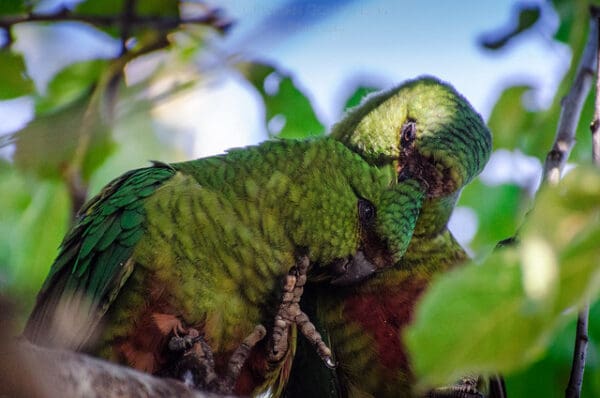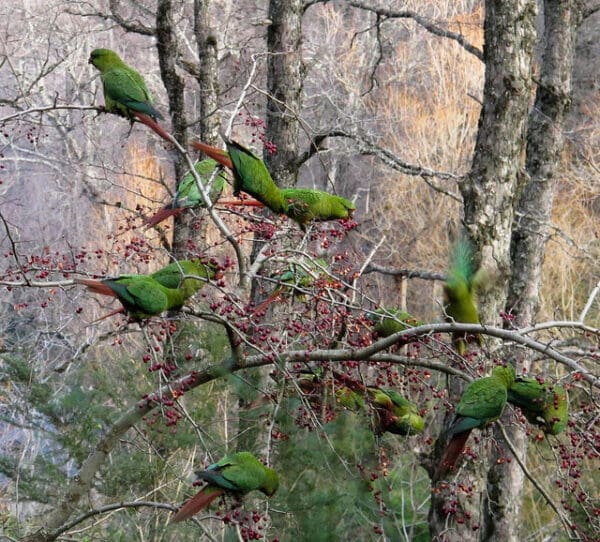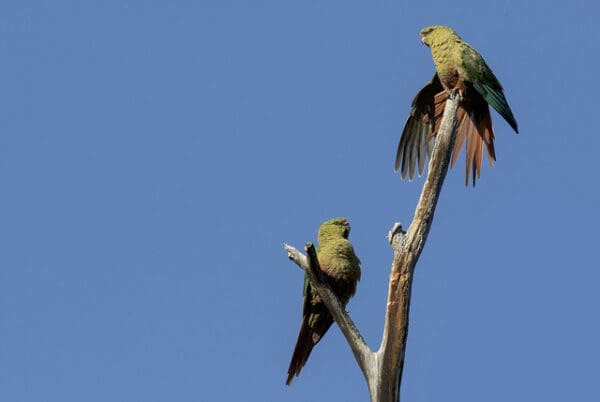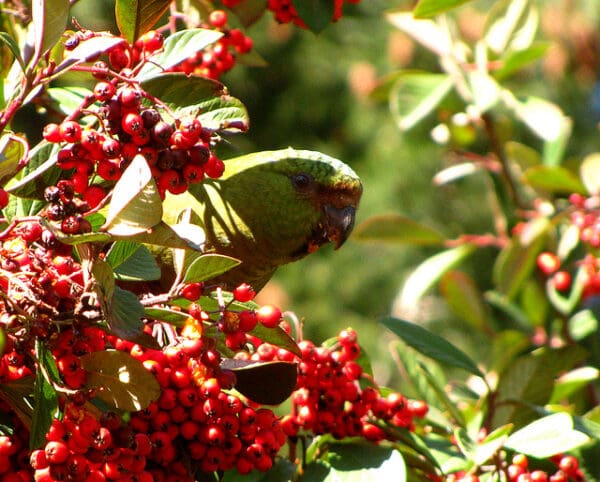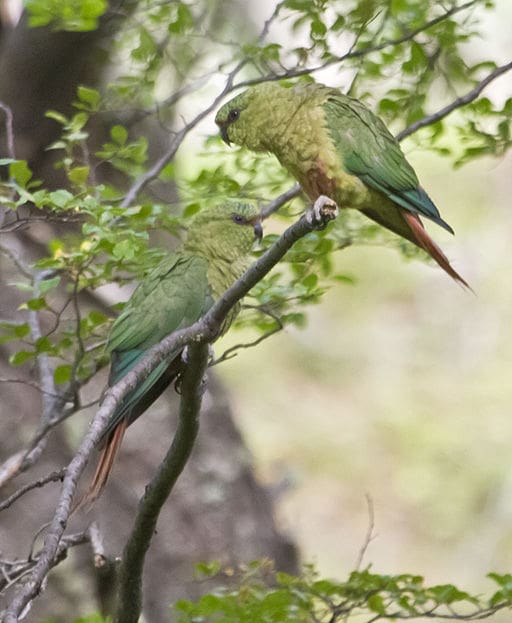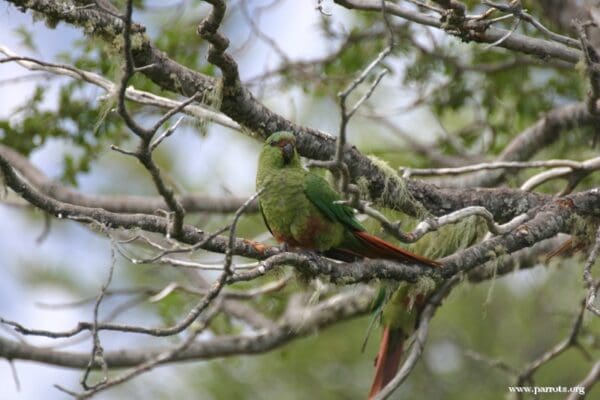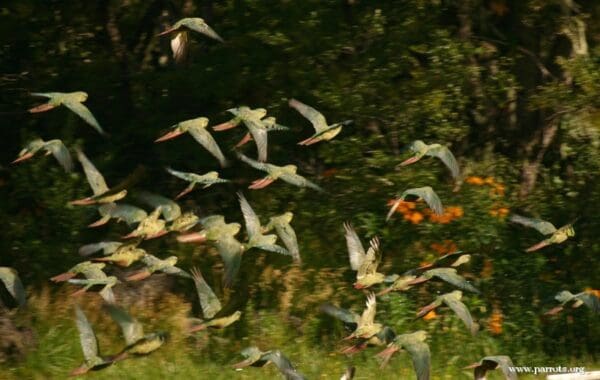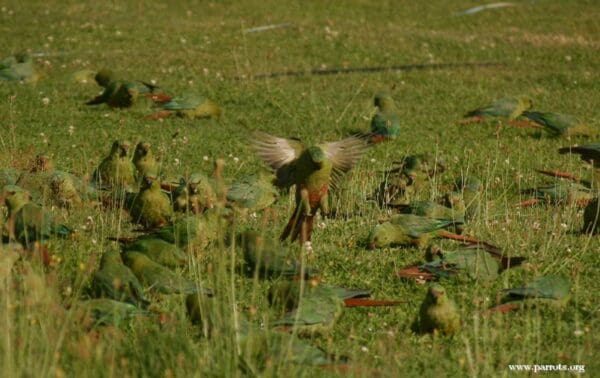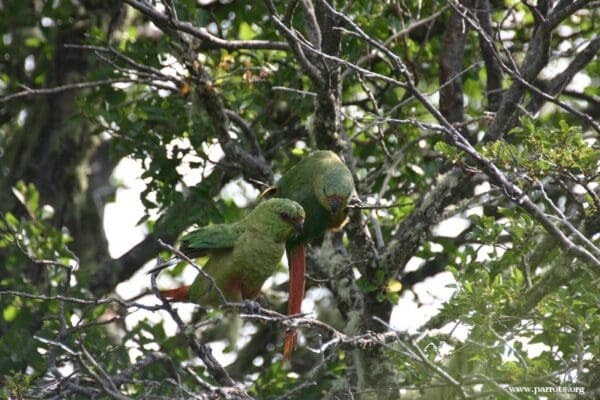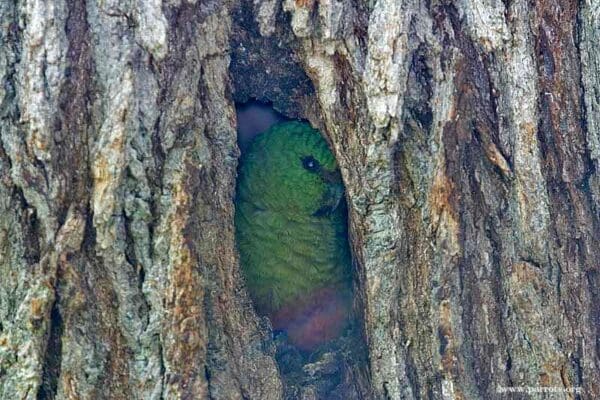Austral Conure
Also known as:
Austral Parakeet, Emerald Parakeet
Also known as:
Austral Parakeet, Emerald Parakeet
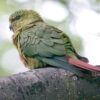
![© Paul Asman and Jill Lenoble [CC BY-NC-SA 2.0] via Flickr Wild Austral Conures perch in a tree](https://gt2024.parrots.org/wp-content/uploads/2023/01/wpt_Austral-Conure_1329-16-100x100.jpg)
![© Cristian Gonzalez G. [CC BY-NC-SA 2.0] via Flickr A wild Austral Conures preen each other](https://gt2024.parrots.org/wp-content/uploads/2023/01/wpt_Austral-Conure_1329-15-100x100.jpg)
![© fedewerner [CC BY-NC 2.0] via Flickr A flock of Austral Conures feeds on berries](https://gt2024.parrots.org/wp-content/uploads/2023/01/wpt_Austral-Conure_1329-14-100x100.jpg)
![© Gregory Slobirdr Smith [CC BY 2.0] via Flickr Wild Austral Conures perch on a branch](https://gt2024.parrots.org/wp-content/uploads/2023/01/wpt_Austral-Conure_1329-13-100x100.jpg)
![© Inao Vásquez [CC BY-SA 2.0] via Wikimedia Commons A wild Austral Conure feeds on berries](https://gt2024.parrots.org/wp-content/uploads/2023/01/wpt_Austral-Conure_1329-12-100x100.jpg)
![© Eleanor Briccetti | [CC BY-SA 2.0] via Flickr Wild Austral Conures perch on a branch](https://gt2024.parrots.org/wp-content/uploads/2023/01/wpt_Austral-Conure_1329-7-100x100.jpg)
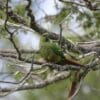

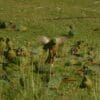
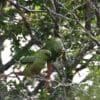
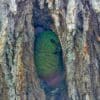
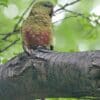
DID YOU KNOW?
Flocks of Austral Conures are known to mob Red-backed Hawks in Tierra del Fuego.

Enicognathus

ferrugineus
Size:
33 cm (12.8 in)
Weight:
160 g (5.6 oz)
Subspecies including nominate:
two: E.f. ferrugineus, E.f. minor
Colour Adult:
E.f. ferrugineus: Both adults dull green in colour with soft black/grey barring; red/brown forehead and lores; red/brown patch in centre of abdomen; brown/red tail. Dark grey beak. Eye ring grey. Eye red/brown.
E.f. minor: Both adults darker green; abdominal patch darker brown/red and less extensive, sometimes absent; smaller.
Colour Juvenile:
As in adults but with duller reddish markings on forehead and abdomen. In the first two months young have white ring around eyes, becoming darker as they get older.
Call:
Calls made in flight shrill; when alarmed are more strident, urgent; also some notes harsher and more grating. Some melodious cries made as well. Young make a very distinctive sound from that of adults, as well as begging sounds for food.
More Information:
Content Sources:
CITES
BirdLife International
Cornell Lab of Ornithology/Birds of the World
Parrots: A Guide to Parrots of the World, Juniper and Parr, 1998
Soledad Diaz, pers. comm.
Lexicon of Parrots, Thomas Arndt.
Parrots of the World, Forshaw, 2006. 2010 edition
Parrots in Aviculture, Low, 1992.
Captive Status:
Nominate race is very rare in captivity; E.f. minor less so.
Longevity:
15-25 yrs
Housing:
Aviary or suspended enclosure, minimum length 3 m (9.8 ft).
Diet:
Fruit such as: apple, pear, orange, banana, pomegranates, cactus fruits, forming about 30 percent of the diet; vegetables such as: carrot, celery, green beans and peas in the pod; green leaves such as: Swiss chard, lettuce, sowthistle, dandelion, chickweed; spray millet; small seed mix such as: canary, millet, and smaller amounts of oats, buckwheat, safflower and a little hemp; soaked and sprouted sunflower seeds; cooked beans and pulses; boiled maize, and complete kibble.
Enrichment:
Provide overhead misters or water bowls for bathing. Provide bird-safe, unsprayed flowering or budding branches, perches, wooden toys, vegetable tanned leather toys, puzzle/foraging toys, heat sterlized pine cones, and ladders, swings, ropes.
Nest Box Size:
Diagonal nest box 18″ x 8″ x 12″ (46 cm x 20.3 cm x 30.5 cm)
Clutch Size:
5-6
Fledging Age:
53-63 days
Hatch Weight:
—
Peak Weight:
—
Weaning Weight:
—
World Population:
Unknown but described as fairly common. Stable.
IUCN Red List Status:
Least Concern
CITES Listing:
Appendix II
Threat Summary:
Common throughout range.
Range:
E.f. ferrugineus: S Chile, in Aisén and Magallanes, and S Argentina, from southwestern Chubut south to Tierra del Fuego.
E.f. minor: C and S Chile, from O’Higgins south to Aisén and eastern slopes of Andes to SW Argentina, from Neuquén south to western Chubut.
Habitat:
Found up to 2000 m mostly in wooded country; also in more open habitat and cultivated areas. Occurs in sea level in southern part of range.
Wild Diet:
Takes grass and seeds of Araucaria araucana, bamboo, acorns, leaf buds of Nothofagus and poplars, fruits, berries and bulbous roots. Reported feeding on insect larvae.
Ecology and Behaviour:
Seen in flocks of 10-15 individuals but larger (up to 100) groups also seen. Nests in tree cavity, scratching sides for thin bits of wood to line nest. May also add loose feathers when they find them, but will not pluck their own.
Clutch and Egg Size:
5-6 rounded eggs, with a maximum of 11. Size 31.0 x 25.0 mm.
Breeding Season:
December. Nest is in hollow in tree, commonly a large dead oak; has been seen making own nest of twigs or grass stems in Chusquea.
Related Links:
—
